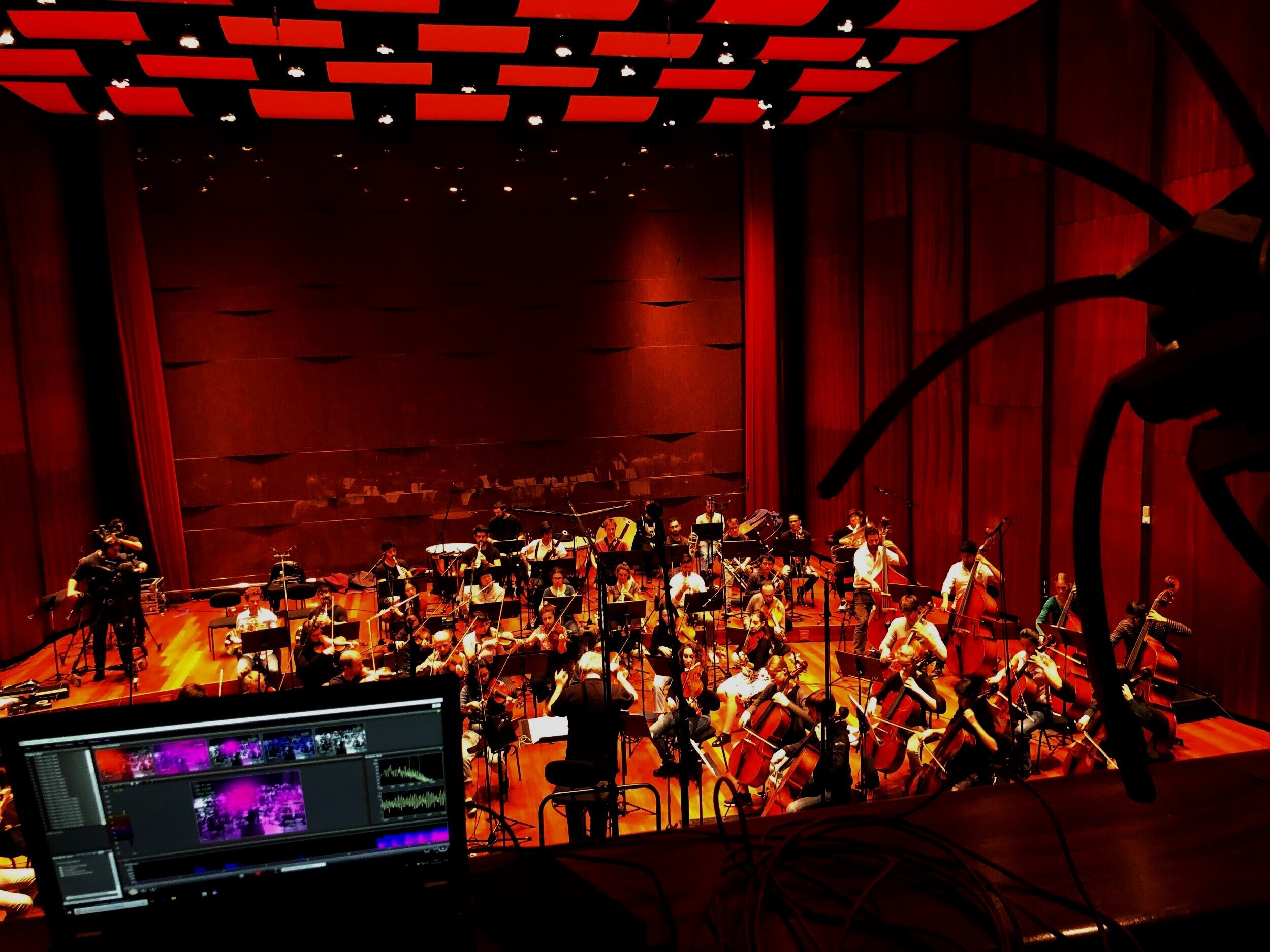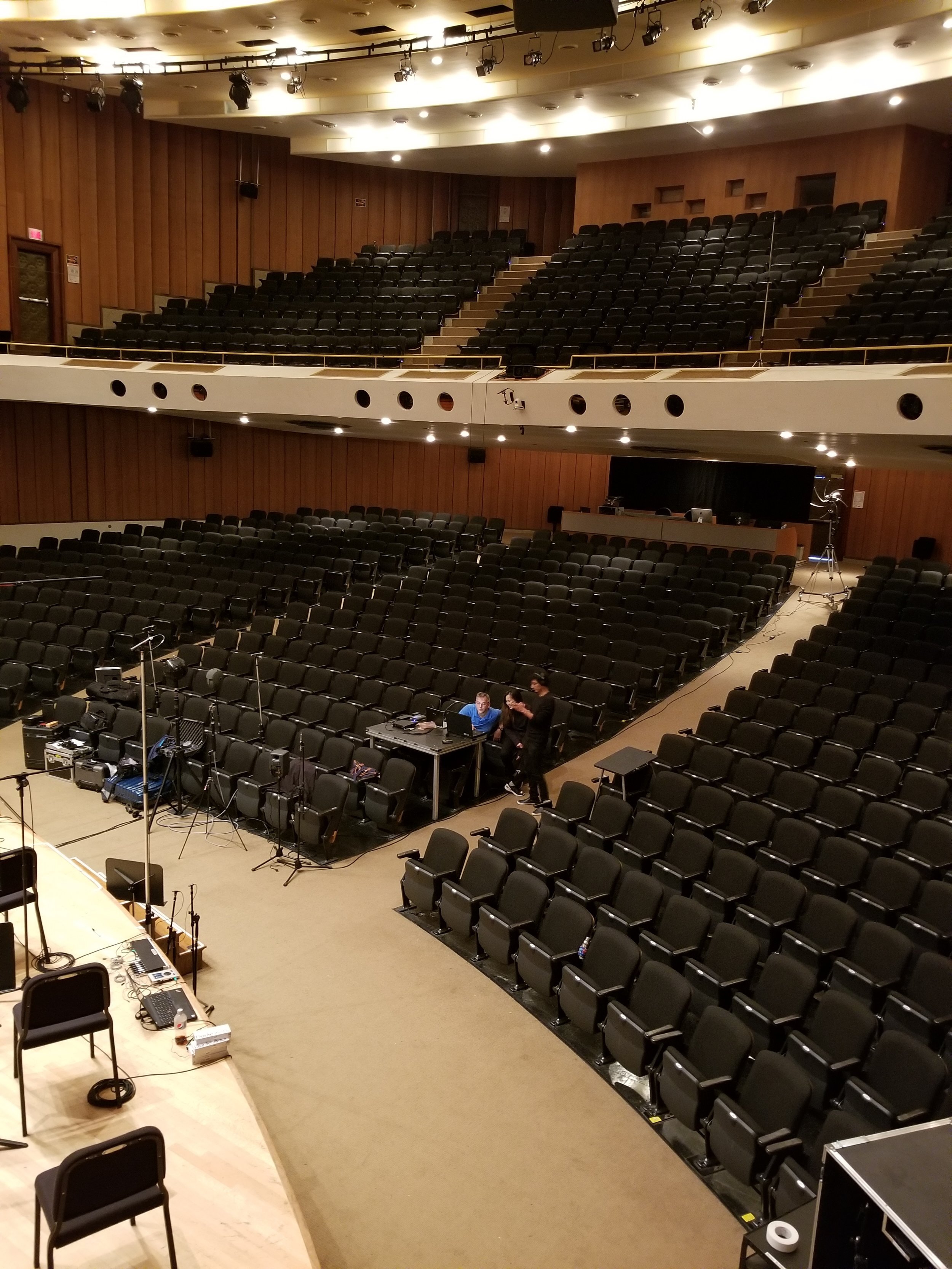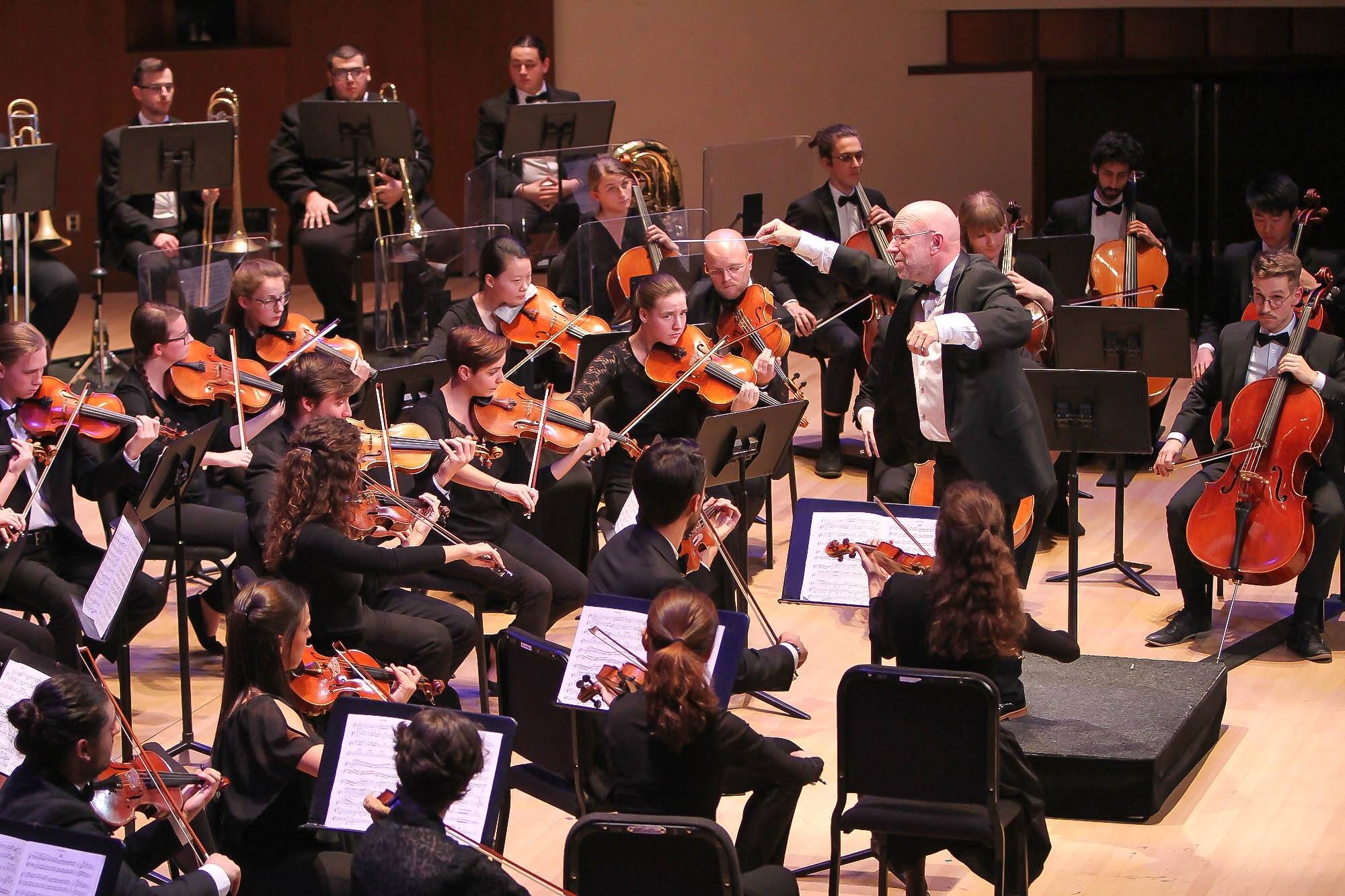Orchestral Distribution Effects in Sound, Space, and Acoustics (ODESSA)
The ODESSA Project creates large-scale multitrack recordings of ensembles and orchestras, using excerpts from the orchestral repertoire. Each excerpt is broken down in different ways—i.e., separating melody and harmony, textures isolated from the whole, or entire passages re-orchestrated—and each element is recorded using many specific arrays of microphones. Learn more about the project.
All Projects
Featured Studies
Perception of a Violin Section
What is the timbral difference between a solo, duo, quartet, sextet, or an entire section of violins?
Study on simultaneous contrast
Four re-orchestrations of a piano chord, first with the original tutti, then tutti without percussion, then by each family: woodwind, brass, percussion, strings.
Study on Addition and Reduction
Studying woodwind blends, and the addition and reduction of instruments, and harmonic tension and release.
About
The Orchestral Distribution Effects in Sound, Space, and Acoustics (ODESSA) Project creates large-scale multitrack recordings of ensembles and orchestras, using excerpts from the orchestral repertoire. Each excerpt is broken down in different ways—i.e., separating melody and harmony, textures isolated from the whole, or entire passages re-orchestrated—and each element is recorded using many specific arrays of microphones. The entire session is mixed by Tonmeisters. Extensive room acoustic measurements are taken of each hall, as an "acoustic camera" records a visual representation of the sound intensity distribution in the hall in specific frequency bands. The recordings made by the ODESSA Project are used to highlight the various timbral and orchestrational perspectives of composers, conductors, and Tonmeisters. The room measurements document the acoustic qualities of the concert hall and include acoustic parameters and spatial sound distribution. In this project, perceptual experiments and critical listening studies will be conducted on orchestral blend perception as a function of various mixing techniques.
Watch a brief documentary about ODESSA I here.
History
ODESSA began in the summer of 2018, with a collaboration between Martha de Francisco (McGill), Jean-Francois Rivest (UdeM), Caroline Traube (UdeM), and Malte Kob (Detmold). The recording of the Orchestre de l’Université de Montréal (OUM) took place at the Salle Claude Champagne in September 2018, with excerpts from Tchaikovsky's Symphony No. 6 in B minor, Op. 74. The focus of this session was to study orchestral blending effects. The following year, ODESSA recording sessions took place at the Haute école de musique (HEM) in Geneva, Switzerland, and the Hochschule für Musik in Detmold, Germany. The HEM session, in October 2019, included re-orchestrated excerpts from Tchaikovsky’s Symphony No. 5 in E minor, Op. 64, re-orchestrated tutti chords from Rimsky-Korsakov’s Principles of Orchestration treatise, various orchestrations of the opening chords of Heller’s Warrior Songs, Op. 45, various orchestrations of the Scherzo from Beethoven’s Sonata No.12 in A-flat Major, Op.26., and excerpts from Núria Giménez's composition that was created with the help of the Orchidea computer-aided orchestration software. The focus of this session was to study combinations and contrasts in orchestration, using the methodology of re-orchestration. At the Hochschule für Musik, in November 2019 melody excerpts of the Beethoven Op. 26 and Tchaikovsky Op. 74 were recorded; the goal was to study the perception of individual violins or of a section of violins.
Partners:
Gallery



















